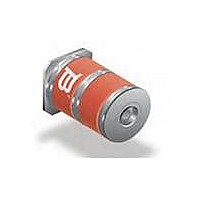2030-23T-SM-RPLF Bourns Inc., 2030-23T-SM-RPLF Datasheet

2030-23T-SM-RPLF
Specifications of 2030-23T-SM-RPLF
Available stocks
Related parts for 2030-23T-SM-RPLF
2030-23T-SM-RPLF Summary of contents
Page 1
... Bourns Transient Blocking Unit (TBU™), gas discharge tube (GDT) and Transient Voltage Suppression (TVS) products to meet the required industry standards on RS-485 port interfaces. 2030-23T-SM-RPLF Introduction to RS-485 RS-485 is a standard communication network for industrial communications, and features fast data rates achieving 35 Mbps for short distances and 100 kbps over longer distances. ...
Page 2
... Max. number of drivers Max. number of receivers Modes of operation Network topology Max. distance Max. speed 2030-23T-SM-RPLF Max. speed at 1200 m Receiver input sensitivity Receiver input range Max. driver output voltage Max. driver output voltage with load Every serial port design depends on the recommended voltage range for the bus pins. RS-485 defines how much protection the device has beyond the − ...
Page 3
... RS-485 interface where they would lack if used independently. The GDT can handle extremely high currents but has a high threshold voltage 2030-23T-SM-RPLF and may not trigger in time. The TBU™ device has a small series impedance that limits current and voltage to which the equipment is exposed. The GDT device protects the TBU™ ...
Page 4
... Each TBU™ provides sub-microsecond protection by transitioning to a protected state with very high impedance within 1 µs if the line current should exceed 100 mA. Finally, to protect the TBU devices from high voltage transients, a 2030-23T-SM-RPLF fast GDT is placed on the line side of the node interface. These GDTs are designed to coordinate with the TBU™ device to provide extremely fast voltage protection ...
Page 5
... TBU™ device can reduce the overall board area compared to what was required previously to meet the protection requirements. The use of Bourns® TBU™ devices brings a new level of overvoltage and overcurrent protection to RS-485 drivers. 2030-23T-SM-RPLF Why Bourns? TBU™ technology is unique to Bourns, a company that has been a proven leader in the circuit protection industry for several decades ...






